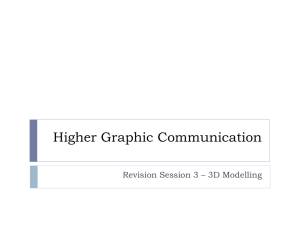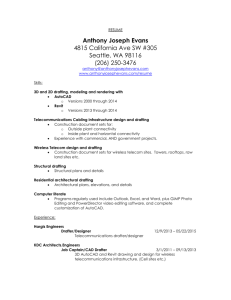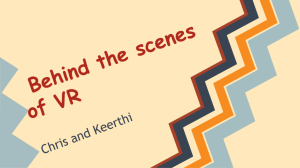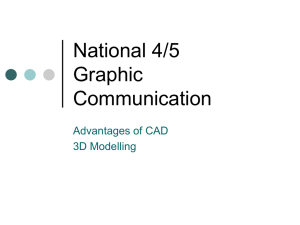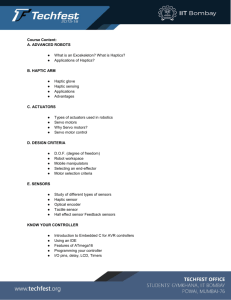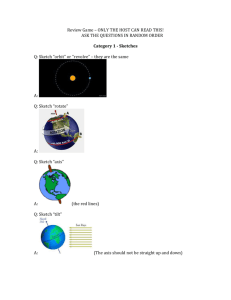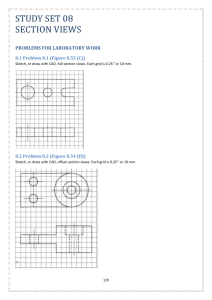Option C: CAD/CAM
advertisement
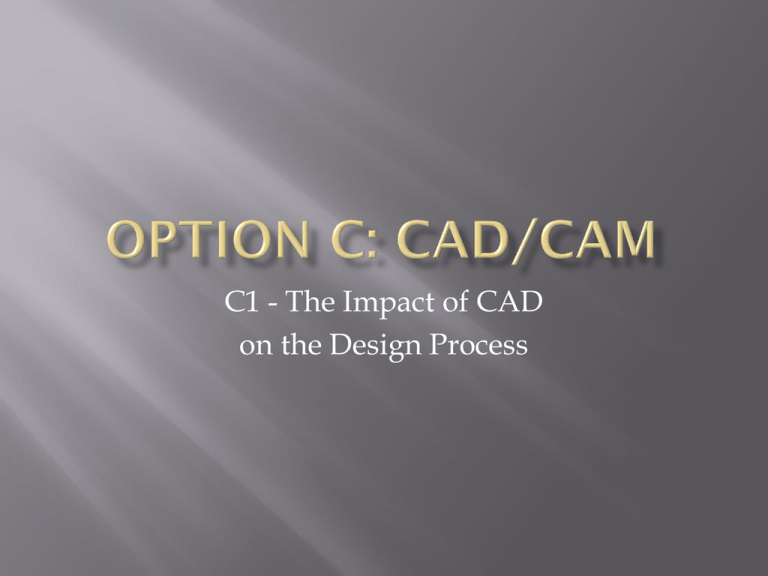
C1 - The Impact of CAD on the Design Process Consider CAD drawing, 2D, 3D, rendering and different types of modelling. Consider product design, architecture and graphic design. The ability to link graphic screens together in such a way as to simulate motion or a process. The ability to simulate a real situation on the screen and interact with it in a near-natural way. Refer to different design contexts. Consider costs, client needs and development time. Consider how this helps to reduce full-scale prototyping, which leads to a reduction in tooling costs, labour costs, energy and materials. Also known as force feedback technology Haptic technology works by using mechanical actuators to apply forces to the user By simulating the physics of the user’s virtual world, it is possible to compute these forces into real time. The recording of human and animal movement by any means For example, by video, magnetic or electromechanical devices. Input devices should include… a scanner 3D scanner digital camera graphics tablet Haptic technology allows the user to become part of a computer simulation and to interact with it, enabling the designer to observe the user’s performance, so as to design a better outcome. Haptic technology can also be used in situations where it may prove difficult to train in the real environment. Haptic technology is also used in feedback devices used in home entertainment consoles. Capturing a number of users’ movements will allow designers to design better ergonomic products. Motion capture allows the designer to understand the users’ physiological requirements. CAD packages no longer ask the user to draw in an orthographic view. Software has been developed to allow users to design from any 3D view. 3D facilities allow complex screen images that can be annotated to create a range of useful data. The data can be used in CAM systems. For example… Orthographic drawings Presentation virtual product images. Revolve: Allows the users to revolve a sketch around an axis. The revolve can be between 0° and 360°. Extrude Profile command Creates a feature by extruding a sketch profile to a given dimension. Starts with a 3D shape in which the designer removes material to build the design Starts with an initial sketch in which the designer builds the design. Bottom up: Additive Design Top down: Subtractive Design A realistic picture of the final model, offering some machining data. Surface models contain no data about the interior of the part Solid models are clear representations of the final part. They provide a complete set of data for the product to be realized. Solid modelling techniques contain more information for the designer in order to produce a 3D model using CNC (computer numerical control) or RP (rapid prototyping) technologies. Surface modelling has no wall thickness. The calculation and simulation of unknown factors in products using CAD systems. For example, simulating the stresses within a welded car part. For example, the maximum load of a vehicle and the stresses acting upon the vehicle from the differences in terrain. Consider costs, type of environment, weather and the user when testing vehicles.
